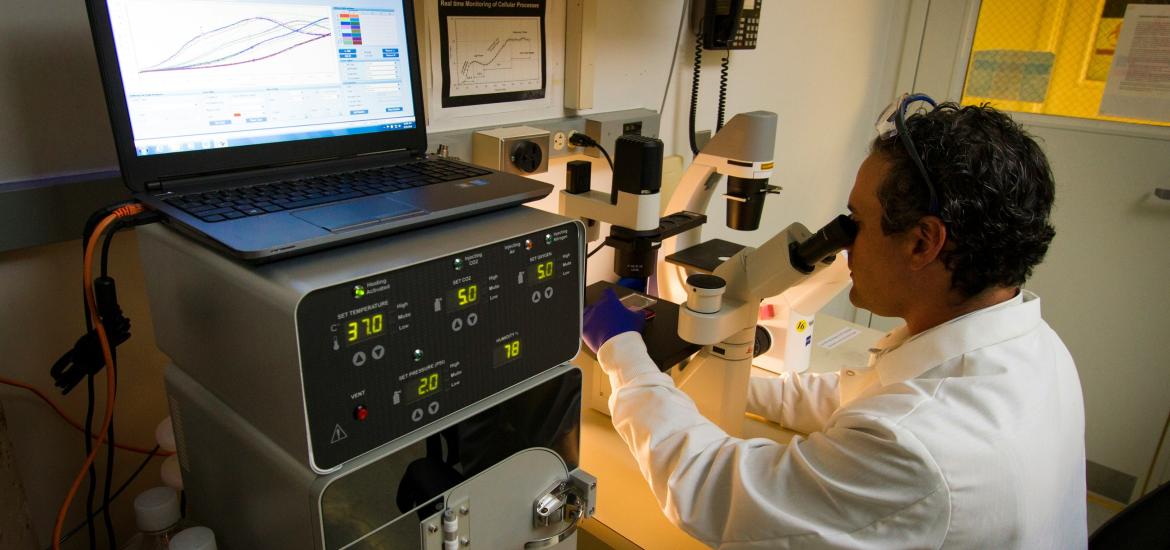
Mersana shows that B7-H4 expression matters
The latest B7-H4 ADC shows activity only in biomarker-positive patients.
The latest B7-H4 ADC shows activity only in biomarker-positive patients.

What Pfizer claims to have achieved with an anti-B7-H4 ADC in an all-comers population Mersana has managed only in patients expressing high levels of B7-H4. That's one take on the results of a phase 1 trial of Mersana's emiltatug ledadotin, the first clinical data from what is now this company's lead project.
Still, this might not be an entirely fair comparison, as data for Pfizer's felmetatug vedotin were clearly driven by B7-H4-expressing patients. AstraZeneca also found this out with its contender, puxitatug samrotecan, which it studied only in a B7-H4-preselected population. This suggests that strong efficacy will elude anti-B7-H4 ADCs until testing for this biomarker is implemented.
It's clear that developing a B7-H4-directed ADC is tricky, and felmeta-V, a Seagen-originated molecule, isn't Pfizer's first attempt at B7-H4. After the Seagen move Pfizer shelved its own anti-B7-H4 T-cell engager, PF-07260437; the group also has an anti-B7-H4 ADC with a topoisomerase 1 inhibitor payload, SGN-B7H4C, in preclinical trials.
The other key player here is GSK, which licensed Hansoh's B7-H4-targeting ADC HS-20089/GSK5733584 in 2023.
23% ORR
Mersana fell 45% on Friday when it unveiled its phase 1 data on emilta-L (earlier coded XMT-1660), claiming a 23% confirmed ORR both in triple-negative breast cancer (13 patients) and across all 26 evaluable patients with various tumour types given what it called intermediate doses of 38.1-67.4mg/m2.
The big caveat was that this efficacy analysis was confined only to subjects with tumours expressing high levels of B7-H4, which Mersana defined as a tumour proportion score of 70% or higher. The phase 1 trial comprised 84 efficacy-evaluable subjects who were also evaluable for B7-H4 expression, and 40 of these met the B7-H4-high criterion.
Though Mersana claimed generally good tolerability, it revealed a worrying toxicity: liver enzyme increases were seen among 38% of patients at any grade, and in 14% they occurred at grade 3. And in 44 patients with B7-H4 expression below 70%, comprising all cancers and all doses, the ORR was 0%.
Felmeta-V better?
On the face of it these data look worse than with those for felmeta-V, for which Pfizer cited a 21% confirmed ORR in 42 all-comer TNBC patients.
However, a straight cross-trial comparison is complicated. For instance, as to B7-H4 status Pfizer cited a 35% ORR in 16 patients with >25% expression, a result that clearly drove the all-comers benefit; subtracting these patients from the all-comers results in an ORR of just 12% among 26 patients who had B7-H4 expression under 25% or unknown.
Indeed, it was notable that Pfizer itself suggested a "potential biomarker-driven" development programme for felmeta-V. Limited data also complicate any safety comparison against emilta-L.
Cross-trial comparison between anti-B7-H4 ADCs
| Project | Company | B7-H4 high expression | B7-H4 low/zero expression |
|---|---|---|---|
| Felmetatug vedotin | Pfizer (ex Seagen) | >25% expressers: cORR 35% in 16 TNBC patients | <25%/unknown: 12% cORR in 26 TNBC patients |
| Puxitatug samrotecan | AstraZeneca | ≥25% expressers: cORR 25% in 12 breast cancer patients | None enrolled |
| Emiltatug ledadotin | Mersana Therapeutics | ≥70% expressers: cORR 23% in 13 TNBC patients | <70% expressers: cORR 0% in 28 patients |
| GSK5733584/ HS-20089 | GSK (via Hansoh Pharma) | cORR + uORR 29% in 28 TNBC patients | |
Source: OncologyPipeline.
That activity might depend on B7-H4 expression was separately demonstrated by AstraZeneca, whose study of puxita-S was prospectively designed only to enrol ≥25% expressers.
Even here the data, which took some three years to generate, seemed underwhelming. The confirmed ORR in breast cancer was 25%, among 12 patients, but there was little dose response. Across all cancers (44 patients) there were nine confirmed responses, but two occurred at a high dose, which saw dose-limiting toxicity and isn't being taken forward.
For its part GSK licenced Hansoh's HS-20089/GSK5733584 on the basis of a 29% ORR among 28 TNBC patients, reported at ESMO 2023. However, while this Chinese trial enrolled patients irrespective of B7-H4 expression, actual expression levels weren't split out; moreover, the ORR included unconfirmed responses.
Prospective testing for B7-H4 would require a change in clinical practice – not impossible given the widespread testing already carried out for other biomarkers. It's something all the players, including BeiGene, which last year put BG-C9074 into phase 1, might have to consider.
2707













